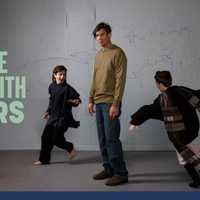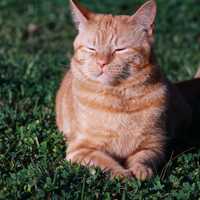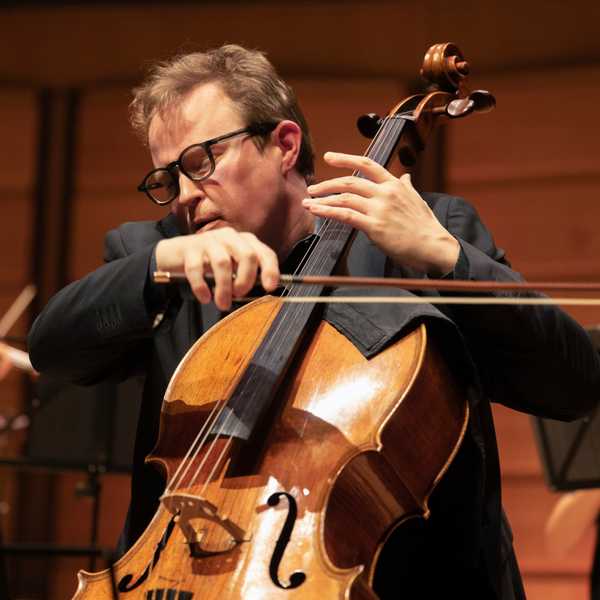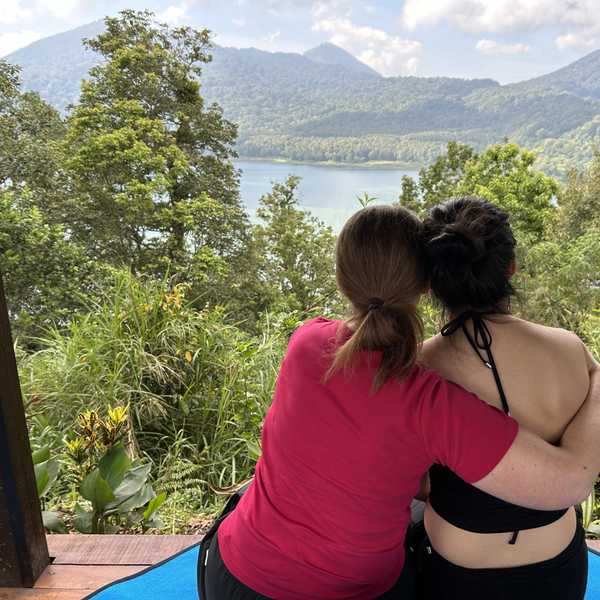Paul Cutlan’s String Project launch their keenly anticipated second album Living. The program traces a narrative which traverses human life and its myriad experiences in compositions by Cutlan himself, Gary Daley, Jann Rutherford, John Coltrane and Jenna Cave.
The planning of this album developed between the time of Australia’s catastrophic bushfires in
January 2020, and the onset of the global pandemic in March. The two-day recording took place in the final week before Australia’s lockdown, bringing a halt to public music-making and most of life’s normality. With person-to-person contact severely limited, the fragility of life and the value of our connections is brought into sharper focus. The repertoire on this album serves as an antidote to the shock and trauma of this time as well as an affirmation of continuing existence of life.
Cutlan composed or arranged the repertoire in the five years between the launch of Across the Top (Tall Poppies). The pieces developed gradually, harnessing a more improvised approach than the first album. “With rehearsal time often limited,” Cutlan reflects, “I felt I needed to be smarter at devising pieces which were more user-friendly and could readily harness the group’s creative intelligence. As a result, the newer repertoire is more improvised than the first album. I arranged pieces by some of my close friends and one by John Coltrane. The one large multi-movement work The Eleventh Hour also uses improvised performance practices. Significantly I took the step of commissioning my friend and wonderful composer Jenna Cave to compose a piece for the group.”
Paul Cutlan’s uniquely expressive voice as a woodwind specialist and composer has seen him lead a diverse career. Recent performances include his ongoing Coltrane Project, Sydney Symphony Orchestra, Bungarribee, Vince Jones (Van Morrison’s Masterpieces), Ten Part Invention, Sam Gill (Scattered), Zela Margossian, and Chris Cody (Astrolabe). He has long been a part of both the Australian Art Orchestra (15 years) and the ARIA award winning group Mara! (20 years and continuing). Paul has also extensively worked as a composer in theatre, jazz, and contemporary classical spheres. He has performed at major festivals across Australia, Europe and North America.
“Paul Cutlan’s very contemporary compositions and creative concepts brought broad minded hope for the future of Australian music – scored or otherwise.” Paul Nolan, artsHub
“The composing and improvising are of equal merit – some achievement for such an ambitious genre-defying project.”John Shand, SMH
Album: Living
Release: 28th October 2020
Label: Earshift Music distributed by MGM
Personnel: Paul Cutlan (clarinet, bass clarinet/soprano saxophone) Liisa Pallandi (violin) Caroline Hopson (violin) James Eccles (viola) Oliver Miller (cello) Brett Hirst (bass) Gary Daley (piano) Tunji Beier (cajon, kanjira, konnakol)
Who: Paul Cutlan String Project
What: ‘Living‘ Album Launch
When: 8:30 pm Tuesday 3 November / SYDNEY
Where: OLD 505 THEATRE / LEVEL 1, 5 Eliza St Newtown
To Book Tickets Click Here
To Livestream the event Click Here
ABOUT THE MUSIC
Living Paul Cutlan
In 1991 I participated in some creative rhythm workshops led by master drummer David Jones. I was fascinated by the technique of dividing odd numbers of beats like 5 or 7 by 2 3 or 4. On the train home from one of these workshops I jotted down a short tune using the 5 divided into 4 feel and called it Living. The arrangement for this album gave me a chance to score some of those concepts for strings with the bass clarinet dancing around their polyrhythms. An energetic solo from Brett Hirst leads to a trade of ideas between the strings and Tunji Beier’s cajon. A quickening solo from Tunji featuring a heartbeat rhythm also introduces the piece.
Sleep in my Arms Jenna Cave
“In mid-2018 after the birth of my daughter I was thrilled to be invited by Paul to compose a work inspired by motherhood for his String Project. As a new mum I would rock my baby to sleep and experience a magical feeling of bliss as she drifted away. I set out to share these moments in the music. Sleep time began with long “shhhing” sounds which became a setting for Paul’s improvised clarinet entry. Next I would start rocking my baby patting her bum to the beat while repeating a “sh-sh-shhh” rhythm. As Paul’s solo grows the “sh-sh-shhh” pattern is spoken by violin one while patting the beat. The bass and string quartet join the groove independently with both jazz and minimalist aesthetics. The music builds as the baby is calmed the beat dissolving as she finally falls asleep. Swelling sustained low notes on the clarinet express the utter calm and serenity that came with sleep lush chords in the strings growing out of this. The final section fully notated starts with a lullaby-like violin melody developing into a ride on the waves of emotion and love I felt as a besotted mother with my baby asleep in my arms.” (Jenna Cave)
Thanks for the Espresso Jann Rutherford
The name Jann Rutherford is better known these days for the valuable Jann Rutherford Memorial Award for talented and aspiring young female jazz musicians. Jann was a talented pianist and composer from New Zealand. Blind from birth she performed and recorded extensively in Australia from 1989 until her early death in 2003. Thanks for the Espresso features on Jann’s debut CD Discovery (Tall Poppies). I had given Jann a stove-top espresso machine for her birthday and she reciprocated with this lyrical tune to be played on soprano saxophone. It’s a beautiful example of Jann’s vivid harmonic imagination and this arrangement is my dedication to her memory.
Middle of the Moment Gary Daley
“Middle of the Moment refers to the experience of suspending the brain’s ceaseless wandering and bringing our focus down to the moment. There are rewards in overriding the ceaseless chatter of our brains and letting ourselves be lost in a kind of reverie and abstraction. These ideas inform this music and performance. The piece opens and closes with a recording I made while travelling in Italy of the sounds of Venice Train station. It was fascinating to watch people coming and going and freely let the sounds smells sights and the myriad interactions both human and machine to flow in and out of my conscious frame. I become completely immersed in the moment. The repeated figure which forms the foundation of the music somehow expresses a sense of flow and immersion in the inward landscape of the mind. The free piano improvisation in the middle of the piece reflects a stream of consciousness response to the moment. Finally Tunji Beier’s beautiful Konnakol inhabits the moment magically transporting us to an inward meditative world.” (Gary Daley)
After the Rain John Coltrane
This is an example of the gentler side of John Coltrane’s output recorded by his quartet in 1963. It is a ballad without a regular pulse. The shimmering piano chords on the original recording together with the irregular pulsing of the double bass are translated here to the texture of tremolo strings and harmonics. As well as reflecting my ongoing passion for Coltrane’s music I’ve always felt this melody suits the voice of the bass clarinet beautifully. Oliver Miller’s cello tenderly intones the melody in the interludes.
The Eleventh Hour Paul Cutlan
The Eleventh Hour was written during the centenary of the end of the First World War as a personal philosophical reflection on human-kind’s predilection to fall into patterns of war and destruction. Prelude is slow chorale suggesting a cross between a prayer or plea for peace and a sorrowful acknowledgement of the fallibility of human nature. Ominous fanfares interrupt heralding the next movement. Portent paints a picture of the mounting inevitability of war. This is a largely improvised argument between the bass clarinet and double bass. Intransigence repeats this same message incessantly without offering any possibility of compromise or settlement. Conflict is the most clearly programmatic movement with distinct episodes evoking different scenarios of war. It progresses from the disciplined energy of armies marching willingly against each other through to the reality of chaos and destruction. The horrors of hand-to-hand combat trench warfare stalemate and mustard gas can be imagined in later episodes. This movement ends with a fragment of the 1914 Christmas truce Silent Night on high cello harmonics against the double bass intoning The Last Post also in high harmonics. Desolation follows a long journey of suffering enervation and human frailty before finding its way back to the original Prelude prayer. This theme searches for resolution before dropping a semitone to the final chords symbolizing a final ‘rest in peace’. (Paul Cutlan)
Share "Paul Cutlan String Project Release Their Second Album ‘Living’"
Copy












